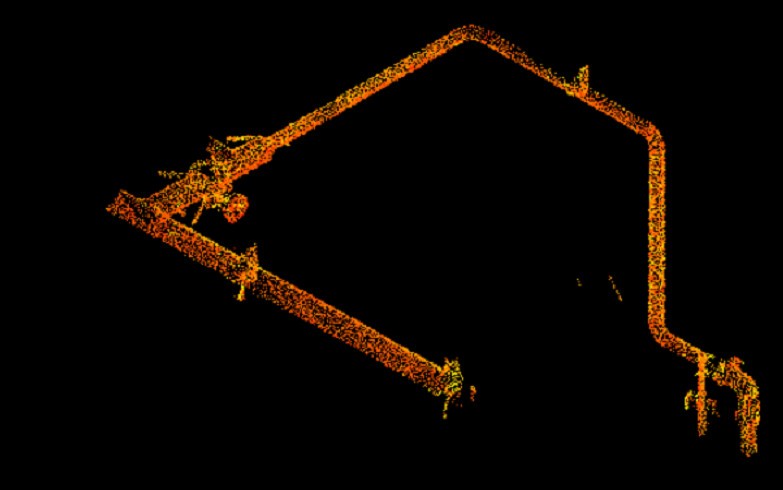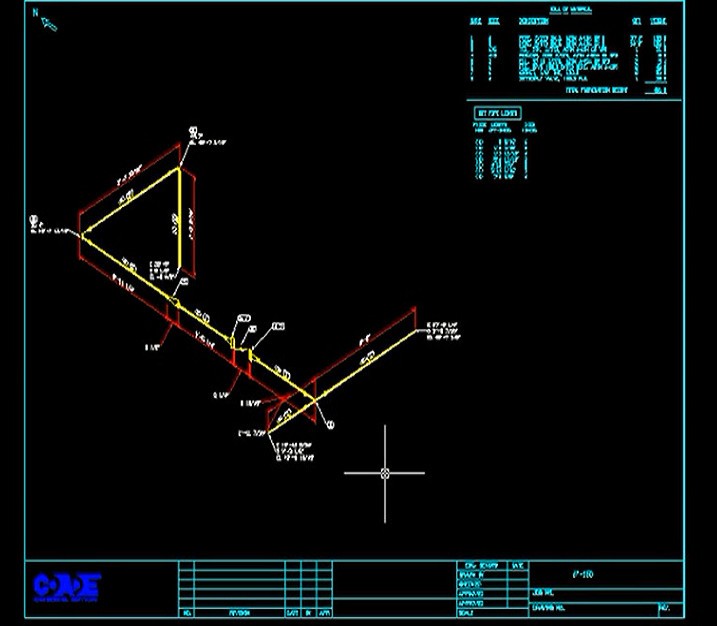3D Lazer Scanning & Modeling
The process industries have completely adopted 3D technology in computer-aided design (CAD) systems for initial plant design and engineering. However, the models and documentation created in these processes do not serve Design, operating and maintenance tasks over the productive life of the assets. This is because the “as-designed” CAD representations often deviate from “as built” or field conditions and, over time, become less representative of the actual plant and equipment. The 3D virtual models typically are not updated as modifications are made to process equipment, nor is it cost effective to maintain these CAD models.
S & A has available technology that utilizes high density laser scanning. This involves a 3D laser scan being undertaken in the field to create a ‘point cloud’. This point cloud is then used to generate deliverables in the form of a 3D model from which 2D drawings are derived.
Benefits: |
The benefits of 3D laser scanning and rendering into 3D CAD objects are noted below:
- Increased accuracy, completeness & reliability and is more time efficient than manual means.
- Accurate and safe data collection of complex areas while maintaining a tight schedule and without the need for physical and sometimes unsafe measuring.
- Fewer site visits required. The information obtained by the scanner forms an exact virtual representation of the physical area scanned thus enabling further accurate information to be obtained from the scanned data.
- The 3D as-built model allows for better design communication of any proposed plant modifications.
- Reduced rework during shut downs. Construction costs and start up delays reduced.
- Higher confidence in the model of the plant’s current state.
- Scanning is possible in a running plant and scanning is possible in difficult to reach areas.
Sample applications supported by 3D Virtual plant models:
Emergency Response – During emergency response planning, it is possible to use 3D models to determine the route emergency response vehicles must take to access every area of the plant. In the event of an accident, the same 3D models can help locate critical shutoff valves and support the determination of the ideal positioning of emergency response vehicles and equipment which will ultimately improve the safety of plant, emergency response personnel and the communities surrounding the plant.
Safety Design Walk-Through – While green-field projects are well served through engineering and construction companies, design walk-throughs for revamp and retrofit projects require imagination or time in the field, and often both. With Virtualization there are two significant areas of improvement: 1) it is possible to hold safety walk-throughs early in the design process, thus preventing costly engineering change orders; and 2) safety walk-throughs can be accomplished from a conference room where all relevant parties can comfortably attend and collaborate online.
Compliance – Many aspects of compliance are facilitated by Virtualization including the accurate and consistent adherence to procedures by field and plant personnel. Virtualization helps make complex procedures and documents much easier and faster to understand and communicate. Visually reviewing and confirming procedural steps becomes a straightforward process making them less prone to error when executed.
Disaster Scenario Training – Disaster training requires significant discussion and review, with much time spent clarifying situations and potential actions. With Virtualization it is possible to review, discuss, and refine potential reactions to various scenarios with the ability to confirm the viability and acceptability of everyone’s actions based upon an actual plant layout.
Analysis of Fugitive Emissions – Using sniffers to measure and Virtualization to pinpoint and record data, it is possible to visualize the source of potential fugitive emissions without speculation. The analysis also can be expanded to correlate to at-fault equipment, enabling changes in either hardware or procedures to eliminate such emissions.
Definition of Special Exposure Areas – In the case of material release, Virtualization allows one to define areas of exposure in 3D coordinates with much more accuracy than in two dimensions. Furthermore, it is possible to overlay weather data to predict and analyze dispersion patterns.
Knowledge Capture – It is possible to append information to the 3D model that captures procedures and expertise from experienced personnel. This information can then be ordered to define safe operating procedures and can be tagged and associated with the physical unit providing concise instructions to less experienced staff.
Maintenance Work Orders – Maintenance work orders today are generally computerized, text-based forms. Maintenance staff is required to consult various, typically difficult-to-obtain documents and to rely heavily on their experience and knowledge to properly perform requested work. Virtualization supports several improvements in this process: 1) the work order can be visualized as to the equipment involved and procedure required; 2) planning the work can ensure that adjacent crews do not interfere with each other and that proper tools and equipment can be delivered to the jobsite in a timely fashion; and 3) plant personnel can visualize the status of planned, open, and completed work orders through color encoding of the 3D models.
Clear Communications – Often times an experienced operator provides instruction to new or less experienced field technicians. The operator frequently accompanies the technician to the specified equipment to ensure proper identification of the equipment requiring attention. With Virtualization, this communication can occur at the operator’s workstation, saving valuable time while ensuring complete and clear communications.
Piping Systems / Vessel Inspection – Virtualization allows inspection personnel to easily search, locate, and review inspection points along with associated readings and historical data. By combining the physical data of the assets with the corresponding corrosion data, users are better able to analyze corrosion trends and perform root-cause analysis on problematic systems and equipment. Furthermore, Virtualization can help optimize inspection schedules based on the geographical proximity of inspection points and the potential scaffolding required to reach them.
Calculating fluid volume in lines to estimate “flushing” requirements - When changing service (e.g., when a line is changed from diesel to gasoline service), you need to estimate the amount to pump to ensure clean products.
Calculating surface area of a plant - This is necessary for estimating the amount of paint required to paint a process unit. Get and validate accurate estimates for resources needed to complete this maintenance task

